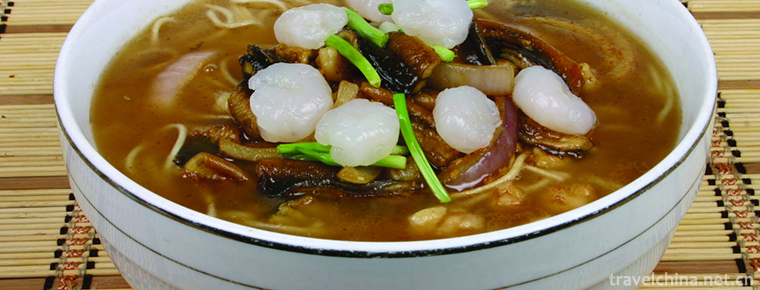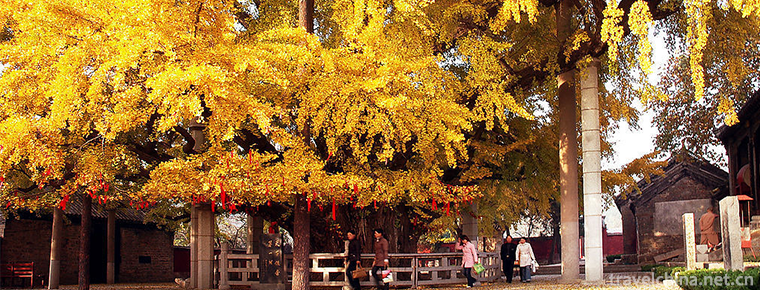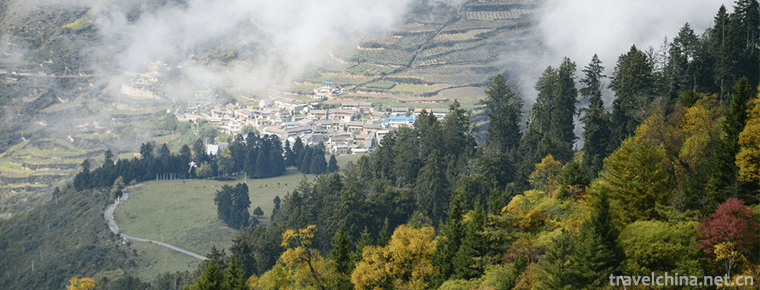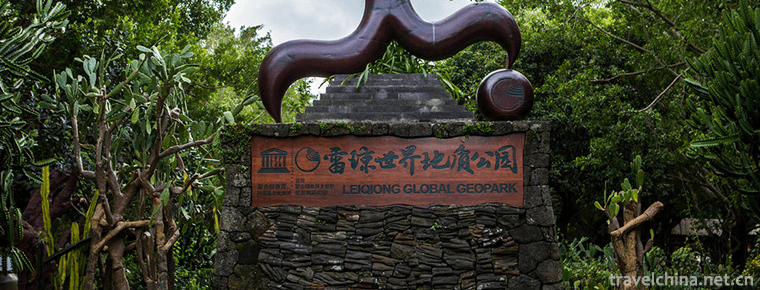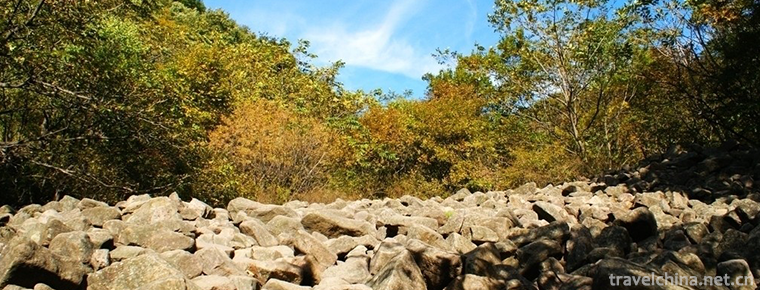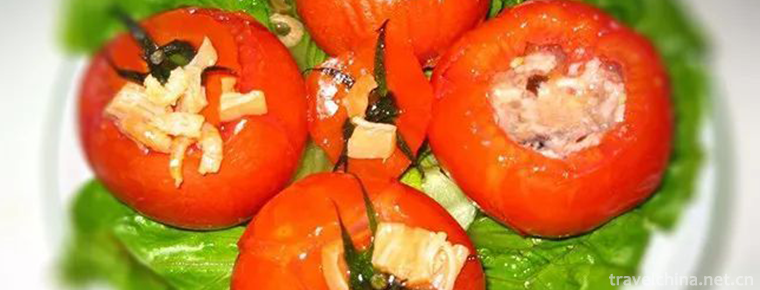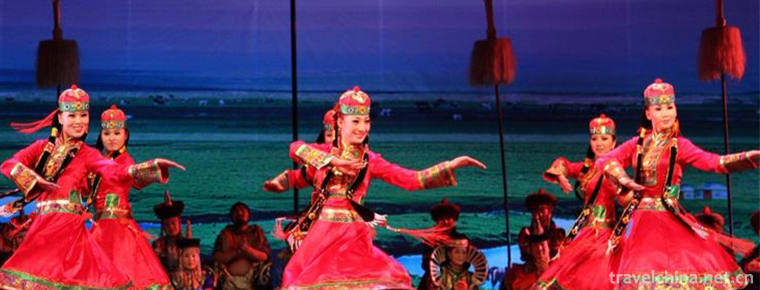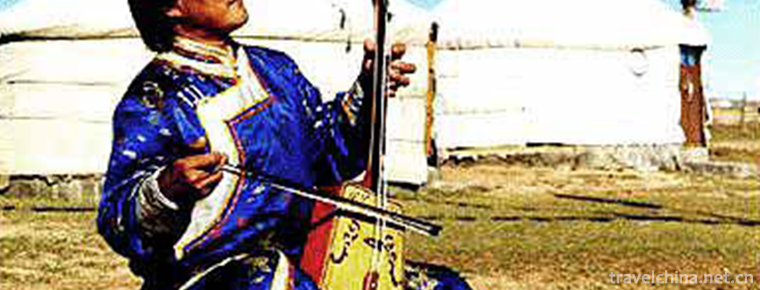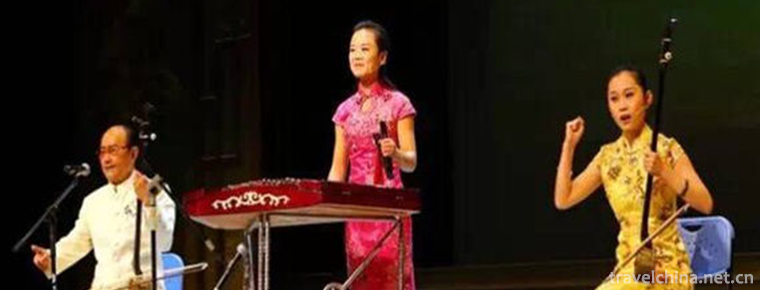Cangzhou Wushu
Cangzhou Wushu
Cangzhou people have been known for their simplicity, integrity, diligence and bravery since ancient times. Because of the relationship between geography and historical conditions, the strong military style has lasted for a long time. It is known as the saying that "Wujianbao is a mighty superficial heroic wind". According to statistics, in the Ming and Qing Dynasties, there were 1937 warriors and Wuju people in Cangzhou. There are 52 categories and weapons originating or spreading in Cangzhou, accounting for 40% of the 129 categories and weapons in China, which is one of the birthplaces of Chinese Wushu. In 1992, Cangzhou was first named "Township of Wushu" by the State Sports Commission, and became the first prefecture-level city in China to receive this honor. The Hui Dynasty, Han Dynasty. Wushu coexists .
In 2006, Cangzhou Wushu was listed in the first national intangible cultural heritage list by the State Council.
brief introduction
Cangzhou "Township of Wushu", including the counties and cities under the jurisdiction of Cangzhou. Historically, in order to oppose feudal exploitation and oppression, Cangzhou folk martial arts became more and more popular. After the founding of the People's Republic of China, Cangzhou Wushu was revived and developed.
Cangzhou Wushu has always been called "open type". With the implementation of the policy of reform and opening up, Cangzhou Wushu is not only more and more popular with the Chinese people, but also more and more valued by the international community. In China, more than 30 countries and regions have been invited to teach art and send people to study and practice in Cangzhou.
There are thirty or forty kinds of Wushu monographs written by Wujie in Cangzhou. Among them, Baji Quan and Chopping Hanging Quan have been approved by the State Administration of Sports as stipulated competition routines, and some monographs have been translated into foreign languages and published abroad. Cangzi Wujie participated in 70 or 80 films, videos and documentaries of various types of boxing. Some martial arts designers won the White Flower Award.
History
According to historical records, Cangzhou folk Wushu flourished in the Ming Dynasty and the Qing Dynasty. By Qianlong, the town of Wushu had formed, and by the end of the Qing Dynasty, it was well known overseas.
From the ancient Yan State to the Ming and Qing Dynasties, many dynasties were built in Youyan, Cangzhou was an important place in Jifu, which was a battle for military strategists of all dynasties. According to historical records, since the 22nd year of Emperor Huan of Qi Dynasty (664 years ago) when Emperor Huan of Qi assisted Emperor Yanshanrong, many wars have taken place in Cangzhou in all dynasties. Frequent battles, the people suffered from charcoal, people's livelihood is difficult, so we must master the skills of offensive and defensive fighting in order to save ourselves. Cangzhou, known as the "far evil County state" in ancient times and the "Xiaoliangshan" in Ming Dynasty, can be seen that the prosperity of Wushu in Cangzhou and the development of Wushu are closely related to the specific geographical environment.
Beijing-Hangzhou Grand Canal runs through the vicissitudes, and Beijing-Jilin and Beijing Main Road run through the north and south. Cangzhou, Botou, Binzhou, Hejian and Xianxian are all the key areas of flood and drought transportation between the north and the south. They are the necessary places for commodity circulation or commodity distribution centers in Beijing, Tianjin, Hebei, Shandong and Henan. They are also the main roads for the great wealth of the government. Therefore, the industries of darts, hotels and loading and transporting flourish in Cangzhou. In order to gain a foothold in the struggle of all trades and professions, we must grasp the high-strength martial arts. At the end of the Qing Dynasty, "Bodyguards don't call Cangzhou" had become a common practice for both north and South bodyguards.
The imperial examination system established in the Sui Dynasty has been perfected since the Tang Dynasty and lasted for many generations. By the middle of Ming Dynasty, the system of Jianwu Township Test and Wuhui Test was abolished in the twenty-seventh year of Guangxu in Qing Dynasty (1901). Wushu in Ming and Qing Dynasties also promoted the development of Cangzhou Wushu. At this time, there were more than 1800 people in Wuju and Jinshi. During the seven years of the Republic of China (1918), Cao Rong, the governor of Zhili, recruited dozens of warriors to teach or serve in his Wushu battalion in order to expand his influence. This action will promote the development of Cangzhou Wushu. In the seventeenth year of the Republic of China (1928), General Zhang Zhijiang of the Cantonese National Army served as the curator of the Central Academy of Chinese Arts. He strongly advocated strengthening the body to resist the sea and save the nation by strengthening the species. Nearly a hundred people were admitted to the library to teach or further study in Cangzhou. At the same time, provincial and county Jianguo Museum or popular education hall advocate martial arts, and "put-style house" throughout the vicissitudes of urban and rural areas, with a large number of people practicing martial arts.
Cangzhou Wulin people always pay attention to internal and external exchanges. Lai Cang artists, warm hospitality. Many people travel around the motherland, or set up bodyguard bureaus, or serve as bodyguard teachers, or folk believers, or join the army to teach art, or seek teachers to release friends to learn skills, or participate in the Wutai Wushu. Huodiangge was employed as a martial artist by Emperor Aixinjueluo Puyi of the late Qing Dynasty; Wang Zhengyi helped Tan Sitong to transform the law into a powerful force to shock the capital; Prince Ping repeatedly won the victory of foreign strongmen on the Rotary Platform; Ma Fengtu and Ma Yingtu passed on art in five provinces and regions of Northwest China; Tongcun, Tongzhongyi, Zhang Zhankui, Sun Wenbo, Yang Jishan, Liu Zhenshan, Zhang Diankui, Wu Xiufeng, Lu Zhenduo, Jia Yaoting and so on. More than ten provinces and municipalities. At the same time, it can absorb the essence of martial arts everywhere and enrich Cangzhou's martial arts. As a result, Cangzhou Wulin class and independent boxing skills become more and more abundant, many boxing routines, after refining, improving and innovating, have unique Cangzhou characteristics.
Characteristic
Cangzhou Wushu has its own style. Besides the eight representative fists, such fists as mad magic wand, seedling knife, poking feet, Yinyang gun and so on are unique to Cangzhou. Cangzhou Wushu has also amassed abundant resources of traditional Wushu. At the beginning of the 21st century, it has absorbed active elements such as Taekwondo and standardized Wushu routines and made new development. Cangzhou Wushu is vigorous and powerful with strong fighting ability. It not only has the courageous growth of opening up and closing up, but also has the absolute skill of pushing and capturing. Every move and form embodies the concepts and implications of Yin and Yang, inside and outside, rigidity and softness, square circle, heaven and earth, and sense and principle originated from Confucianism, Buddhism and Taoism in Chinese culture.
Practicing Cangzhou Wushu can improve people's physical quality, exercise people's spiritual character, promote people's all-round development, enrich and perfect Chinese and even international Wushu culture, and further promote the development of Wushu training, performance, competition, exchange, festivals, exhibitions, equipment production and trade and other related industries. However, Cangzhou Wushu skills are mainly handed down orally and heartfelt. Old boxers have low cultural level and "knowledge is in their stomachs", while they are old and many excellent skills are on the verge of being lost, so they are in urgent need of protection and rescue.
Besides those lost, there are more than 50 kinds of Wulin categories and independent fists and weapons in Cangzhou, including Liuhe, Baji, Mizong, Gongli, Taizu, Tong Arm, Springing Leg, Chopping Hang, Tangquan, Mantis, Kunlun, Feihu, Taiping, Bapanzhang, Lie on the ground, Qingping sword, Kunwu sword, Chuangwang sword, Mad Devil stick, Erlang, Miaodao, Yanqing, Shaolin, Huaquan, Mianmian, Xingyi, Pingzi, Rongzi, Shaolin, ambush, Huaquan, Mianmian. Zhang, Short Boxing, Yin Pistol, Yang Jiagun, Taiji and Bagua are all over the country.
Development
On October 1, 1949, the People's Republic of China was born. The Communist Party of China and the People's Government regard Chinese Wushu as an excellent national cultural heritage, which is included in national sports. Cangzhou Wushu has been revived. Since November 1953, after Tianjin National Sports Performance Conference, Prince Ping, Tong Zhongyi and Wang Jinsheng were selected to perform in Beijing Performance Troupe. They performed for Mao Zedong, Zhou Enlai, Zhu De, Chen Yi and He Long in Zhongnanhai, and were highly praised. In 1956, Chairman Mao Zedong received him. In 1960, Prince Ping and his daughter Wang Jurong visited Myanmar with a national delegation led by Premier Zhou Enlai. At the same time, Cangzhou Wushu athletes have won many awards in all levels of Wushu competitions in Cangzhou and in provincial and national Wushu competitions, which has great impetus to the revival of Cangzhou Wushu.
From 1966 to 1976, during the "Cultural Revolution", some martial artists were impacted for some reasons, some boxing scores and historical relics were destroyed, and the development of Cangzhou Wushu was temporarily frustrated, while the practice of martial arts remained unchanged, and some outstanding people succeeded at this moment. After the Third Plenary Session of the Eleventh Central Committee of the Communist Party of China in 1979, Cangzhou Wushu was revitalized again. Prefectures, cities and counties have established Wushu associations, established, restored and enriched Wushu teams, equipped with leaders and coaches, and increased Wushu training facilities. Some primary and secondary schools offer martial arts classes, arrange martial arts exercises, and private martial arts halls and societies, such as bamboo shoots after a spring rain, are booming rapidly. At the same time, local, municipal and county martial arts competitions are held annually to encourage advanced martial arts and expand communication and exchanges. In 1983, the work of digging and arranging traditional Wushu was carried out in an all-round way, and a bumper harvest was achieved. Thus, the traditional Wushu can be inherited and developed, and the national prescribed routines can be widely disseminated. Cangzhou Wushu athletes participated in provincial and national competitions, ranked first many times, and some were selected into provincial and national Wushu organizations or colleges and universities. Cangzhou Wulin personages also hold leading positions in provincial and national Wushu organizations, and some are professors or senior coaches of Wushu. In Cangzhou, hundreds of thousands of people practise martial arts, Cangzhou "martial Arts town" reputation revitalized, 1985, Hebei Sports Committee officially named.
In 2006, it was successfully selected into the first batch of national intangible cultural heritage list, numbered VI-10.
Reasons for prosperity
Cangzhou is a place where soldiers and businessmen are bound to compete in history. From ancient times to the present, there have been frequent wars in Cangzhou, and the people have been covered with charcoal. It is impossible to survive without advocating military force. This place is not only a place for the distribution of prisoners, but also a good shelter for rebels. Some traitors who were seized by the court searched for the strong and martial customs of Cangzhou people to cover up their bodies, hide their names and pass on art to survive.
Cangzhou is located at the bottom of the Jiuhe River. Its land is barren. Drought, waterlogging and insect disasters often drop to prison. In a normal year, many families produce half a year's grain of bran vegetable. In the year of severe disaster, there are many vagrants and beggars who sell their children and beautiful women. Folk ballad cloud: "abandon Huangkou son, a breast of gratitude; but hate life, do not complain parents endure." Many strong men survive by selling salt, and the government finds them severely. If the people can not survive, they must resist, and if they resist, they must practise martial arts. Qianlong's Cangzhou Chronicle contains: "Cangyi is vulgar, vigorous and vigorous, light on life and death, and has been known for its integrity since ancient times. In Chengping's time, the family gave people feet, high-spirited and magnificent. Once something happens, we should try our best to defend the countryside, even if we abandon the top but do not show mercy, "which shows that the people of Cangzhou have been upholding righteousness and serving as chivalrous swordsmen since ancient times.
Cangzhou is a multi-ethnic area. Due to historical reasons, the Han and Manchu, Mongolian, Hui and other minority nationalities have had diaphragms and misunderstandings, but unhappy things, gradually harmonious. The displeasure between nationalities promotes the development of Wushu, and the harmony between nationalities and the exchange of skills promote the development of Wushu.
Heritage Protection
The state attaches great importance to the protection of intangible cultural heritage. On May 20, 2006, the intangible cultural heritage was approved by the State Council and listed in the first batch of national intangible cultural heritage list. On June 5, 2007, Shi Tongding of Cangzhou City, Hebei Province, was identified by the Ministry of Culture as the representative successor of this cultural heritage project, and was listed in the first batch of 226 representative successors of national intangible cultural heritage projects.
Cangzhou Wushu Festival
The Cangzhou Wushu Festival is held every four years. It is a good opportunity for people to watch, learn and communicate. People who like Wushu can come to join in Wushu. Cangzhou Wushu Festival in Hebei Province was first held in mid-October 1989. It was held once a year in the golden autumn season and seven sessions in 2003. Cangzhou Wushu Festival is one of the earliest and most experienced mass Wushu festivals in China. It has a high reputation both at home and abroad.
Cangzhou Wushu Festival integrates Wushu, culture and economy. It highlights the characteristics and advantages of Cangzhou traditional Wushu and fully reflects the popularity, traditionality, academic and international nature of the Festival. All previous festivals have invited friends from the martial arts circles of the former Soviet Union, the United States, Belgium, Japan, Singapore, Hong Kong and other countries and regions to participate in various activities such as the International Symposium on Traditional Wushu, the Economic and Trade Fair, the Exhibition of Famous and Specialty Products, the International Symposium on Excellent Wushu Friendship, the Wushu Competition and the Performing Competition. They have put forward the idea of promoting the martial arts of "patriotism, self-cultivation, justice and helping others". Spirit, carry forward the fine tradition of "Jingwu Family", and expand the influence of "Wushu Town" in Cangzhou.
Famous person
characteristic
Cangzhou Wulin has many famous teachers and high martial arts virtues. Their deeds are widely spread among the people. Such as defeating the Russian strongmen and being rewarded by Emperor Kangxi, Ding Faxiang, the Wushu instructor of Emperor Xuantong, Huodiangge, the Eight-Chi Boxing Master, and helping Tan Sitong to transform the law, shocked Wang Zhengyi in the capital; Li Shuwen, Li Guanming, Li Fenggang, Liu Dekuan and Li Wenbiao, as well as Tuo Zhongyi, Guo Changsheng, Li Yusan, Yang Jishan, Sun Wenbo, Wu Xiufeng, Zhang Diankui and Lu Zhenduo. Jia Yaoting, Ding Yulin, Ding Runhua, etc. In modern times, Prince Ping, the "King of Divine Power and Jack", won many times over the foreign strongmen on the rolling platform, while Ma Fengtu and Ma Yingtu spread their art in the five northwest provinces. In the Nanjing Central Academic Museum founded by Zhang Zhijiang in the Republic of China, there were 52 Cangzhou boxers teaching in the Museum successively. They have made great contributions to resist humiliation, suppress evil spirits, promote national prestige and glorify Chinese Wushu, and are praised as martial arts masters and national pride. At the same time, they absorb the essence of martial arts everywhere to enrich Cangzhou's martial arts. As a result, the categories and skills of Cangzhou Wulin become more and more abundant. Many boxing routines have their own Cangzhou characteristics after refining, improving and innovating.
Zi Ping Wang
Wang Ping, Hui, was born in 1881 and died in 1973. He was the vice-chairman of the Chinese Wushu Association. He was born in a Wushu family in Cangzhou, Hebei Province, where Wushu is located. He learned from Yang Hongxiu, a Shandong native, and carefully studied boxing, Bajiquan and Longquan sword.
In 1919, the Russian strongman Kantaier, known as "the world's first strongest man", performed his skills in Beijing Central Park. He was very arrogant. The prince was calm in indignation and frustrated in public. Later, he defeated the Western powers Mazzini, Alaman, Cochi Mai and Sullivan. When they were in Qingdao, they were besieged by the Japanese Emperor's Constitutional Police. Prince Ping threw them downstairs one by one. Prince Ping Hou was the next martial arts coach of the Ministry of Army, Ma Zizhen. He was famous for his great efforts in performing stone-lifting and stone-pedaling in the army.
Ding FA Xiang
Ding Faxiang, Hui nationality, Ziruiyu, Ding Faxiang, Ziruiyu, born in Ming Wanli 43 years (1615), died in Kangxi 33 years (1694), first trained in biographical boxing, springing legs, and poking feet, and later fortunately met and worked in Huang Judao long, nicknamed "sloppy Dao man", and learned excellent Eight Chi Boxing.
In the summer of 1676, in the fifteenth year of Emperor Kangxi's reign in Beijing, he bravely exposed the rank of Emperor Wuxian, climbed the first stage of Shenzhou, and killed two technicians who came to China to fight against the world's invincible opponents, the mighty man "Dayao" and "Eryao Niu", thus preserving the honor and status of Daqing in the world and being relatives. Emperor Kangxi, after his self-observation, was awarded the title of "Iron Warrior Knight-errant".
Huo Dian Ge
Xiaoji, a famous Bajiquan master, Li Shuwen's disciple and master of the sixth generation of Bajimen, was a martial arts teacher and guardian of Puyi, the emperor of the late Qing Dynasty. In 1932, he accompanied his nephew Huo Qingyun and others to the northeast, where Bajiquan was widely spread.
Ding run Hua
Ding Runhua, a 66-year-old Hui nationality, is the 12th generation grandson of Ding Faxiang, a famous martial artist in the Qing Dynasty. Since the age of 10, Ding Yulin, a famous master of Bajiquan and senior consultant of Tianjin Bajiquan Academic Federation, has taught apprentices at the age of 20. He has published his martial arts skills in China Today magazine published in 16 countries and has participated in national, provincial and municipal martial arts for many times. Skills competition, the results are among the top. Currently, he is the curator of Mengcun Jingwu Museum, the standing member of Hebei Wushu Association, the vice-chairman of Cangzhou Wushu Association, the chairman of Mengcun Wushu Association, the sixth paragraph of the state, the first level referee, the senior coach of Bajiquan, the senior consultant of Kaimen Bajiquan Research Association, the senior consultant of Yinyang Bajiquan, the honorary president of Weinan Bajiquan Research Association, the president of Mengcun Branch of Hebei Normal University, and the second national level. Class I warriors have won individual Championships in Shenyang National Wushu Competition in 2000, and first prizes in Beijing Sports University Wushu Competition in 2009, including Bajiquan and Liuhe Gun, respectively. They have won 11 first prizes successively. Nowadays, Ding Runhua's old predecessors are carrying forward the spirit of the Eight Poles and spreading the culture of the Eight Poles as before.
Academy
It is the only state-run Wushu professional college in Cangzhou, and the national referee of "Baijie of Chinese Wushu Ling", the academician of Hong Kong Institute of International Education, the vice-chairman of Hebei Wushu Association, the member of the Economic Committee of China Wushu Association, and Liu Shulai, the son of the East, is the president of the college. Our college is Cangzhou.
The only first batch of advanced martial arts schools in China. Every year, more than 80% of graduates are sent to key universities and professional teams in various provinces. These include Peking University, Fudan University, Beijing Sports University, Shanghai University of Traditional Chinese Medicine and so on. CCTV, People's Daily, Hong Kong Ta Kung Pao and China Educational Television have been reported by many news organizations. Our Institute has been compiled into a book on Chinese resources in the 21st century, and a hundred schools in the 21st century, Chinese Wushu and other books. At present, the president is formally recruited by the Hong Kong Institute of International Education and the International Institute of Education as academician and director of the Academy. The Institute decides to recruit graduates from the Institute every year for undergraduate and master's degrees. The number of doctoral students is unlimited. It has signed friendly cooperation agreements with Czech Republic and Korea Guwudao Association to send foreign students to the institute. Overseas, New Zealand, Italy, France, Morocco and other foreign students come to study at the institute. In 1999, the Institute formally signed a large-scale project with Wolong International Investment Company of Hong Kong to build Cangzhou International Wushu Cultural City with an investment of 120 million US dollars. In order to run smoothly after three years'completion, 400 middle-level and lower-level managers have been trained, and the enrollment work is beginning. The majority of junior and senior high school graduates are welcome to enter the examination enthusiastically. In addition, special training classes continue to enroll students every year, and other majors continue to enroll students of all grades in primary and secondary schools.
Cangzhou Wushu Museum
Cangzhou Wushu Museum, located in the north of Beijing Road in Cangzhou New District, west of Yingbin Avenue, covers an area of about 50 mu, with a building area of about 20,000 square meters, and can accommodate 2,500 people. It will become an important carrier of Wushu competitions, training, exhibitions, academic exchanges, Wushu expositions and operation of Wushu industry in our city.

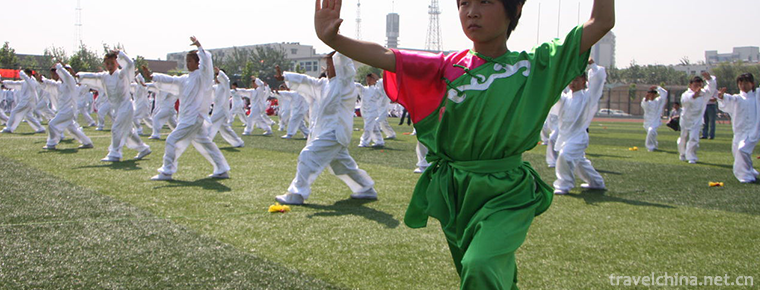
-
Noodles with quickfried eel shreds and shelled shrimps
Shrimp fried eel noodles is a famous traditional food in Kui yuan hall, Hangzhou City, Zhejiang province. When the shrimp is cooked with fried eel noodles, select the strong fresh eel,.
Views: 158 Time 2018-10-27 -
Fulaishan Scenic Area
Fulaishan Scenic Spot, located about 8 kilometers west of Juxian County Town, is a national AAAA-level tourist scenic spot, provincial scenic spot, provincial geological heritage nature reserve, and i.
Views: 141 Time 2019-01-12 -
La Ga Shan
La'er Mountain is located in the South Bank of Bailong River in the southeast of Lijie Township, Zhouqu County, Gansu Province, 12 kilometers away from 313 provincial roads.
Views: 120 Time 2019-01-29 -
Leiqiong Haikou Volcanic Group World Geopark
Leiqiong Haikou Volcanic Group World Geopark is located in Shishan Town, southwest of Haikou City. It is only 15 kilometers away from the urban area. The Expressway .
Views: 149 Time 2019-01-29 -
Limutai Natural Scenic Area
Limutai Natural Scenic Spot is located at the northernmost end of Tianjin, known as "Tianjin Arctic". In the scenic area, the peak forest and canyon are strong and dangerous.
Views: 172 Time 2019-01-29 -
Eight treasures tomato
Blanch the tomatoes with boiling water, peel them off, dig a round piece along the pedicle one week, remove the seeds and wash them. Cut all the accessories into small dices, mix shrimps and meat with.
Views: 266 Time 2019-03-25 -
Mongolian Sawurden
Mongolian Sawurden, Xinjiang Uygur Autonomous Region and Jingxian traditional dance, one of the national intangible cultural heritage..
Views: 200 Time 2019-06-04 -
Mongolian Matouqin Music
Horsehead Qin is a typical representative of Mongolian music culture. Whether it is its shape, production material, sound quality, timbre, music expression style and performance method, it embodies th.
Views: 138 Time 2019-06-05 -
Xuzhou Qinshu
Xuzhou Qinshu is a kind of opera recognized by Xuzhou local people in Jiangsu Province. Spread in Xuzhou. At first, it was a recreational activity of "playful friends" in the leisure time of.
Views: 308 Time 2019-07-09 -
Cuiping Mountain Park
Cuipingshan Park, located in the northwest of Yibin City, Sichuan Province, is a famous urban forest park integrating scenic spots and forest scenery. It is mainly composed of Cuiping mountain and Zhenwu mountain. .
Views: 135 Time 2020-10-16 -
cheongsam in the Republic of China
Since 1840, the western culture has been infiltrated into the local culture of the Qing Dynasty. Many coastal cities, especially Shanghai, have taken the lead in western culture because of the mixture of Chinese and foreign cultures, and their clothing has begun to undergo potential changes..
Views: 118 Time 2020-12-11 -
Introduction to Panzhihua
Panzhihua, a prefecture level city of Sichuan Province, is located in the southernmost end of Sichuan Province, 614 km away from Chengdu in the north, 273 km from Kunming in the South and Lijiang and Dali in the West; it is located in the central and southern section of Panxi Rift .
Views: 331 Time 2020-12-14
